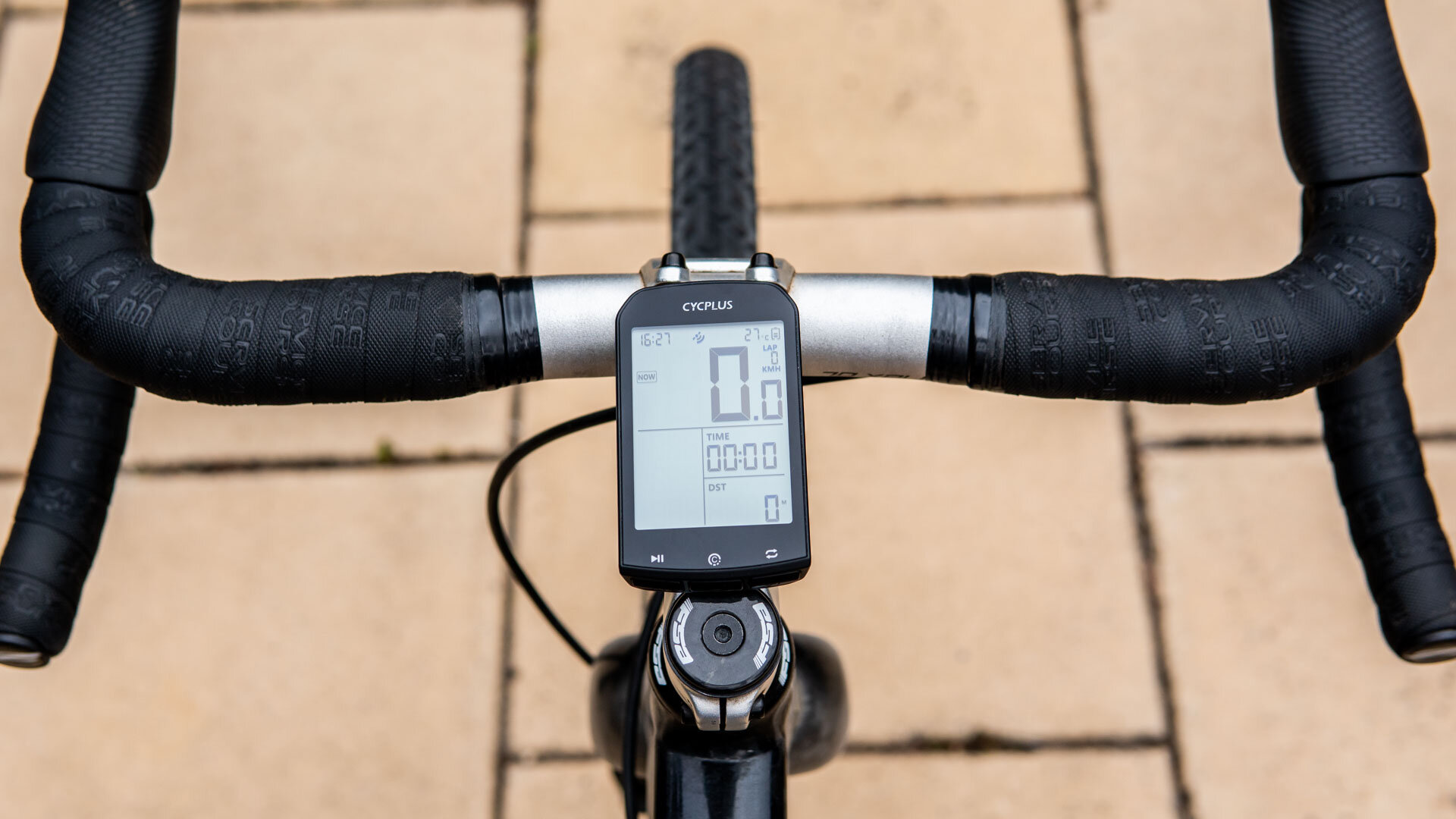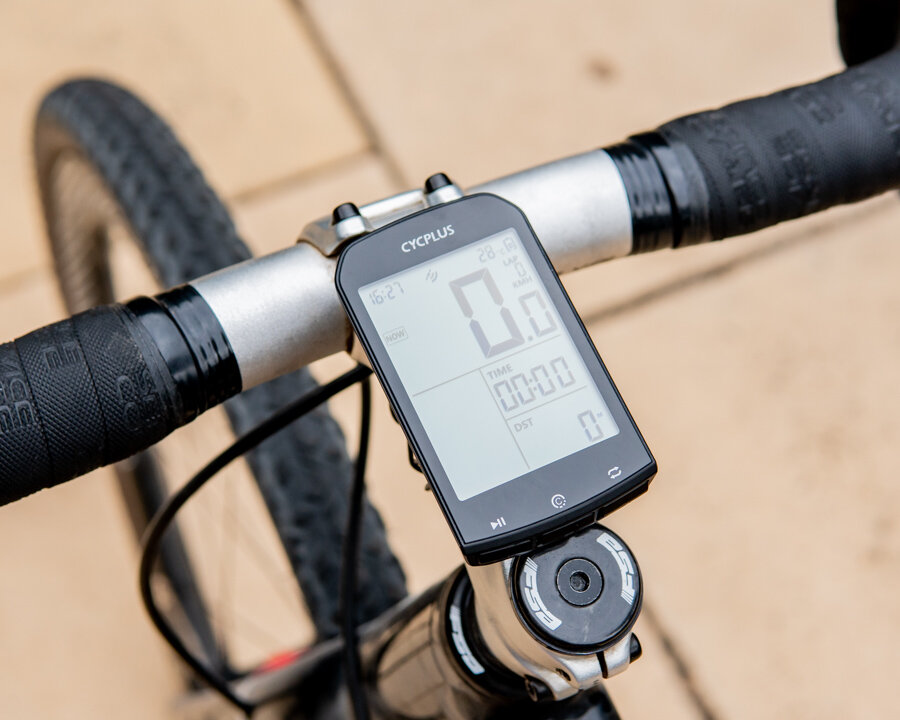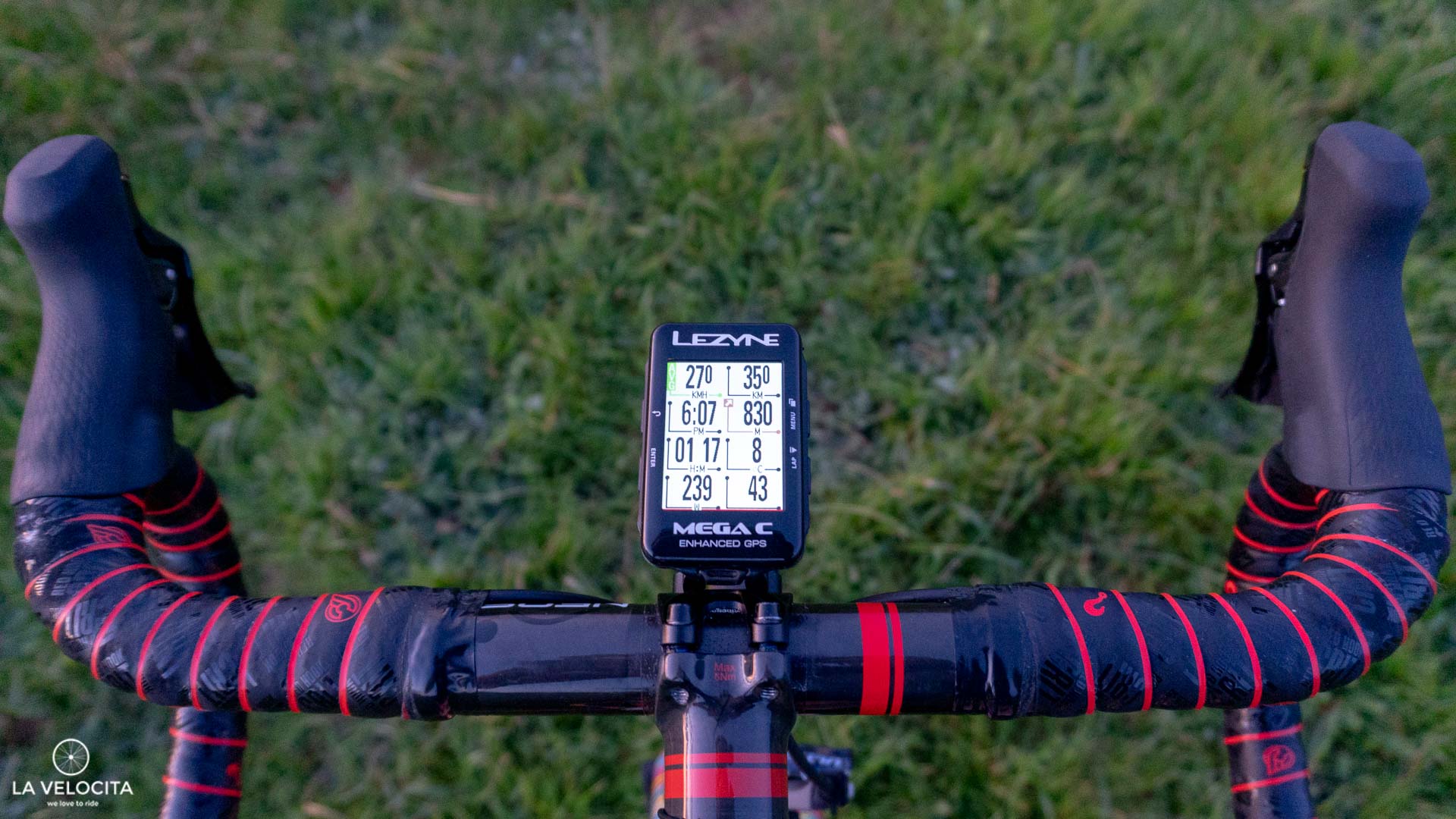Cycplus M1 GPS review

HOW GOOD CAN AN $80 GPS BE? I PUT THE CYCPLUS M1 TO THE TEST TO FIND OUT
Words and Images - James Raison
I’ve been thinking recently, partly driven by YouTube requests, about reviewing cheap GPS units. When I mean cheap, I mean really cheap. It just so happened that a hardware maker reached out to me and asked if they could send me a test unit.
I typically think that units like the Bryton Rider 420 and Lezyne Mega XL are excellent GPS units for the budget-conscious, but are they really cheap at over $200? What if you want a bike GPS for less than half of that? I’ve been testing an almost bafflingly low-priced $80 Cycplus M1. It has an impressive spec sheet for $80, so what are you missing out on to reach $80? Let’s find out!
ABOUT
Price: $79.99
2.9” display size
IPX6 waterproof rating
Ant+ protocol for connecting to power, cadence, and heart rate sensors.
In the box:
Cycplus unit
Quarter-turn stem mount
micro-USB cable.
HARDWARE
I was pleasantly surprised at the unit’s hardware qualities. They’ve kept it simple but given some quality features.
The star of the show is the screen. Its 2.9” size makes it larger than the Wahoo ELEMNT Roam, Garmin Edge 830, and 530. Its visibility is good too, with quite an easy-to-read font. There are some smaller data fields and icons which do take a closer look to read clearly, but that’s common across plenty of GPS units. The backlight is bright, and always on when in motion, which makes it easy to read during the day and night. My only problem is reflectivity. It’s like a mirror and will beam the sun directly into your eyes when angles are right.
Three buttons run along the bottom edge of the unit, and each pulls double-duty with short and long presses. There’s an icon on the front face showing the first function but an engraved icon on the button itself to show the second function. I liked the size and solid click when prodding the buttons.
I am genuinely stoked to see the Garmin style mount on the unit’s back, which meant I could use my vast collection of Garmin out-fronts. The supplied stem mount is acceptable but it’s nice to have the entire world of Garmin-compatible mounts at your disposal. It clicks into Garmin mounts with acceptable firmness but is slightly less than perfect.
The Cycplus M1’s hardware undoubtedly exceeded my expectations for a unit of this cost, and is decent hardware overall.
SETUP
It’s a quick but not intuitive setup process for the Cyclus M1. There’s a numbered “C” menu system, of sorts, where you change a few basic settings. C2 is adding sensors, C3 is adjusting wheel size (I’m not sure why this is in a GPS enabled device but ok…), C4 is a time zone setting, C5 sets speed units, C6 sets temperature units, and C7 ends ride. I did have to refer to the manual a few times when using the menu because there’s no words, just icons and numbers you can change.
You can’t change data fields or layout, which is expected with these cheap GPS units. That means you’ll have approximately 25% of the screen as dead space if you’re not using power, heart rate, or cadence sensors.
Sensor connectivity is easy, just go into your C2 menu, and it’ll automatically connect to any active heart rate, power, or cadence sensors throwing out an ANT+ signal. Be mindful that the unit will connect to the first sensor it notices in the surrounds. Trying to find sensors in a moving bunch full of people broadcasting data could end in a random selection of your mate’s data.
XOSS APP
Be still my beating heart; the Cycplus M1 has a companion phone app! Cycplus uses the XOSS app as the bluetooth uploading system, bridge to Strava, and a post-ride analysis platform. Generally speaking I was pleased with how it performed once I’d adjusted some expectation.
Bluetooth connecting is instant and was 100% reliable for me. I can’t say the same for any other Bluetooth system I’ve used, and I’ve used a lot. There was none of the turning things off then on again nonsense that is common with bike GPS units in my experience. It finds the device and connects to it instantly. Bluetooth uploading is a glacially slow process though, with even short rides taking several minutes. But it’s certainly a welcome and valuable feature.
Ride analysis is largely fine with maps, sensor graphs, zones, and all the data you’d expect from most platforms. I’m a Strava loyalist though so I never had much of a reason to look at it.
THE RIDE
The Cycplus sits quietly on your bars and diligently records your ride. That’s ostensibly all there is to it. Usually, I have a set of mapping, navigation, and a full bag of boondoggles to test when a review GPS is sitting on my bars but there was none of that here. The lap button works, and the page scroll works. What else is there to test…?
Once you’re done, simply navigate the dopey C menu and end your ride and upload.
A QUICK AN UN-SCIENTIFIC DATA COMPARISON
I did a side-by-side test with the Cycplus M1 and Garmin Edge 530. There wasn’t anything complex; just ride with both units at the same time and see if the data lines up. I only saw minor variances between the two devices with distance, speed, and segment times all lining up closely. I did notice the Cycplus can be tardier when finding satellites. I saw no other signs of the Cyclplus M1 being a lesser device from a data recording perspective.
THE FLEXIBILITY COST
Flexibility is the biggest sacrifice you’re making to hit that low price point. Knowing what you don’t get is equally important to knowing what you do when it comes to this unit. You get more than expected but the features come with fixed utility.
Here’s some examples of what I mean:
You get a nice set of data fields but they’re set in position. You can’t move them around to have everything you want on the same page.
It seems there’s no BLTE sensor connectivity, only ANT+.
It’s cool to see sensor connectivity but 25% of your screen will be dead space if you’re not using any. You can’t change that space to do anything else.
The backlight cannot be turned off. It’s always lit up when you’re in motion.
The power data is fixed at 3-second smoothing. There’s no other option. Power data without context like lap average power or normalised power has limited utility. Those training to power like likely want more detail than they will get here.
I can’t get my time zone. The menu uses a +/1 system to set time zone but I’m in GMT+10:30. I can only choose full numbers so will either be 30 minutes early or late because GMT+10 and GMT+11 are my only options.
SHOULD YOU BUY IT?
The most important factor in making a purchase decision is to know what you’re getting and, importantly, what you’re not. The Cycplus M1 has more features than I was expecting but there’s no flexibility to them. You get what you get.
I’ve also spent a little time testing a Bryton Rider 15 which costs roughly the same and shows what a larger, more established brand can squeeze into the same price. In short; Bryton gives you a superior app for easy setup and management, but the GPS itself has much smaller and less appealing hardware overall. The lack of flexibility in screen setup is common across both though.
WRAPPING UP
I’m impressed with what Cycplus have packed into the M1. The hardware far outperforms expectations, you get basic sensor connectivity, and a phone app for BLTE uploading. For many, that’ll be enough. Now to contradict myself by recognising the sometimes incongruent nature of the unit. It’s high on features but low on flexibility.
If you’ve got this far and the unit still appeals then you should buy it. Despite limitations, I love how far GPS tech has come to get units this good for only $80.









